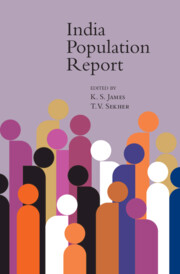12 - Urbanization and Housing Infrastructure in Urban India
Published online by Cambridge University Press: 15 August 2023
Summary
Introduction
Cities are considered the growth engines for an economy (Chen and Partridge, 2013). They cover a very small part of the land but account for a major share of the country's gross domestic product (GDP). In India, the urban share of the GDP was 62–63 per cent in 2009–10, which is expected to increase to 70–75 per cent by 2030 (Housing and Urban Development Corporation [HUDCO] and National Institute of Urban Affairs [NIUA], 2017). As per The Economic Survey 2016–17, about 90 per cent of tax revenues are generated by just one-third of the country's population, which reside in urban areas (Ministry of Finance, 2017). However, the rapidly growing cities in developing countries are struggling to provide the adequate infrastructure, services, and governance systems needed by the increasing populations (United Nations Development Programme [UNDP], 2016). Urban infrastructure is the underlying structural support and needs of a city. It is defined as the ‘sinews’ of the city, which include its roads, bridges, water and sewer lines, waste disposal facilities, power systems, public buildings, parks, and recreation areas (National Research Council, 1984). The basic infrastructure and services such as availability of electricity, improved source of drinking water, improved sanitation, and clean fuel are the most critical aspects for the better quality of life of the urban population (Bhagat, 2011). No doubt, cities play a vital role in the national economy, but on the contrary, they also face increased strain on existing inadequate infrastructure such as transport, housing, water, sanitation, and electricity. According to the 2011 census, in India about 93 per cent of the households have electricity as the main source of lighting, 81 per cent have latrine facilities within the premises, 71 per cent have access to tap-water facility, and only 68 per cent in urban areas have housing that may be deemed to be in good condition.
Since independence, India's total population has increased two-and-a-half times, while at the same time the urban population has grown by more than sixfold. As per the 2011 census, 377 million Indians (31 per cent) lived in nearly 7,933 towns and cities of the country, which was only 62 million (17 per cent) in 1951. India accounts for about 11 per cent of the global urban population.
- Type
- Chapter
- Information
- India Population Report , pp. 452 - 497Publisher: Cambridge University PressPrint publication year: 2024
- 1
- Cited by



